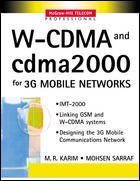Software Requirements Using the Unified Process
暫譯: 使用統一過程的軟體需求分析
Daniel R. Windle, L. Rene Abreo
- 出版商: Prentice Hall
- 出版日期: 2002-08-26
- 售價: $2,050
- 貴賓價: 9.5 折 $1,948
- 語言: 英文
- 頁數: 280
- 裝訂: Paperback
- ISBN: 0130969729
- ISBN-13: 9780130969729
已絕版
買這商品的人也買了...
-
 ASP.NET 實例導引 (ASP.NET by Example)
ASP.NET 實例導引 (ASP.NET by Example)$480$379 -
 LPI Linux 資格檢定 (LPI Linux Certification in a Nutshell)
LPI Linux 資格檢定 (LPI Linux Certification in a Nutshell)$880$695 -
 Web 好色-網頁色彩學
Web 好色-網頁色彩學$420$328 -
 JBuilder 實用技術手冊
JBuilder 實用技術手冊$600$474 -
 微軟網路百科全書 (Microsoft Encyclopedia of Networking, 2/e)
微軟網路百科全書 (Microsoft Encyclopedia of Networking, 2/e)$890$703 -
 重構─改善既有程式的設計
重構─改善既有程式的設計$720$569 -
 $399A Programmer's Guide to Java Certification: A Comprehesive Primer, 2/e (Paperback)
$399A Programmer's Guide to Java Certification: A Comprehesive Primer, 2/e (Paperback) -
 鳥哥的 Linux 私房菜-伺服器架設篇
鳥哥的 Linux 私房菜-伺服器架設篇$750$638 -
 鳥哥的 Linux 私房菜─基礎學習篇增訂版
鳥哥的 Linux 私房菜─基礎學習篇增訂版$560$476 -
 osCommerce 購物網站架設實戰
osCommerce 購物網站架設實戰$550$468 -
 辦公好幫手系列-Word 2003 文書處理與排版實務
辦公好幫手系列-Word 2003 文書處理與排版實務$490$387 -
 SCJP‧SCJD 專業認證指南 (Sun Certified Programmer & Developer for Java 2 #310-305 與310-027)
SCJP‧SCJD 專業認證指南 (Sun Certified Programmer & Developer for Java 2 #310-305 與310-027)$850$723 -
 人月神話:軟體專案管理之道 (20 週年紀念版)(The Mythical Man-Month: Essays on Software Engineering, Anniversary Edition, 2/e)
人月神話:軟體專案管理之道 (20 週年紀念版)(The Mythical Man-Month: Essays on Software Engineering, Anniversary Edition, 2/e)$480$379 -
 JSP 2.0 技術手冊
JSP 2.0 技術手冊$750$593 -
 Postfix 技術手冊 (Postfix: The Definitive Guide)
Postfix 技術手冊 (Postfix: The Definitive Guide)$720$569 -
 發誓學會 Flash MX 2004 ActionScript
發誓學會 Flash MX 2004 ActionScript$620$527 -
 建構嵌入式 Linux 系統
建構嵌入式 Linux 系統$780$616 -
 Exchange Server 2003 管理實務
Exchange Server 2003 管理實務$580$493 -
 Linux 網路管理實務: 調校、帳號、監控、安全
Linux 網路管理實務: 調校、帳號、監控、安全$580$458 -
 JSP 與 Servlet 500 個應用範例技巧大全集
JSP 與 Servlet 500 個應用範例技巧大全集$590$460 -
 最新 JavaScript 完整語法參考辭典 第三版
最新 JavaScript 完整語法參考辭典 第三版$490$382 -
 Linux 程式設計教學手冊
Linux 程式設計教學手冊$780$616 -
 Linux 指令詳解辭典
Linux 指令詳解辭典$650$514 -
 Red Hat Enterprise Linux 管理指南
Red Hat Enterprise Linux 管理指南$580$493 -
 ASP.NET 徹底研究進階技巧─高階技巧與控制項實作
ASP.NET 徹底研究進階技巧─高階技巧與控制項實作$650$507
商品描述
Software Requirements Using the Unified Process: A Practical Approach presents an easy-to-apply methodology for creating requirements. Learn to build user requirements, requirements architecture, and the specifications more quickly and at a lower cost. The authors present realistic solutions for the entire requirements process: gathering, analysis, specification, and maintenance.
Table of Contents:
Preface.
Acknowledgments.
I. INTRODUCING GOOD REQUIREMENTS.
II. BUILDING THE USER REQUIREMENTS.
III. BUILDING THE REQUIREMENTS ARCHITECTURE.
IV. BUILDING THE SPECIFICATIONS.
V. USING THE REQUIREMENTS ARCHITECTURE.
VI. APPENDICES.
商品描述(中文翻譯)
《使用統一過程的軟體需求:實用方法》提供了一種易於應用的方法論來創建需求。學習如何更快速且以較低成本建立使用者需求、需求架構和規格。作者針對整個需求過程提出了現實的解決方案:收集、分析、規範和維護。
目錄:
前言。
致謝。
I. 介紹良好的需求。
1. 良好需求的重要性。
良好需求的理由。良好需求的方法。良好需求的好處。良好需求對開發和生產力的影響。良好需求對測試和品質的影響。良好需求對組織的影響。識別良好需求。
2. 良好需求的特徵。
良好需求的特徵。良好需求集的特徵。良好需求的語言。良好需求的可傳達性。
3. 產物和過程概述。
產物介紹。過程介紹。從需求到設計的轉變。
II. 建立使用者需求。
4. 了解問題領域。
研究該領域。閱讀、閱讀、閱讀。訪談客戶和使用者。建立使用案例。
5. 角色和使用案例。
定義系統的邊界。從穩定狀態轉變到穩定狀態。識別使用案例。引入變更管理系統範例。
6. 建模使用案例。
繪製使用案例圖。概括使用案例。為變更管理系統概括使用案例。使用案例之間的關係。繪製變更管理系統使用案例。打包使用案例。打包變更管理系統使用案例。
7. 使用活動圖表示使用案例。
活動圖的元素。變更管理系統活動圖。
8. 撰寫使用案例。
模板使用。逐步描述。替代路徑。例外和問題。變更管理使用案例。
9. 使用故事板驗證使用案例。
向使用者展示故事板。演進的圖形使用者介面展示。其他圖表和圖片。向使用者展示使用案例。變更管理系統故事板。
III. 建立需求架構。
10. 實體和事件作為物件。
類別和物件。記憶的事件作為類別。變更管理系統類別。
11. 建立類別圖。
概括。多型性。聚合。關聯。打包類別。變更管理系統範例。
12. 使用狀態轉換圖。
狀態轉換圖介紹。類別層級狀態轉換圖。使用案例層級狀態轉換圖。系統層級狀態轉換圖。變更管理系統狀態轉換圖。
13. 通過序列圖實現使用案例。
序列圖介紹。在序列圖中實現使用案例。變更管理系統的範例序列圖。
IV. 建立規格。
14. 開發軟體需求規格。
根據需求調整標準。從類別圖中指定功能需求。指定非功能需求。識別需求之間的依賴關係。
15. 開發介面需求規格。
IRS模板。IRS的前言。IRS的參考部分。IRS的需求部分。IRS的協議和消息部分。
16. 驗證軟體需求規格。
使用過程確保良好需求。使用同儕評審確保良好需求。指定測試樹。分析測試樹。需求驗證檢查表。
V. 使用需求架構。
17. 維護系統。
接收變更請求。分析變更。分析使用者需求。識別新的和變更的使用案例。識別新的和變更的需求。實施版本。
18. 確保從需求中獲得最大利益。
重新檢視對開發和生產力的好處。重新檢視對測試和品質的好處。重新檢視對組織的好處。
VI. 附錄。
附錄A. 需求開發的規劃模型。
模型工作分解結構。模型努力分配。模型時間表分配。標準主要里程碑。
附錄B. 變更管理系統產物。
變更管理系統使用案例。變更管理系統類別圖。變更管理系統狀態圖。變更管理軟體需求規格。
參考文獻。
索引。





























